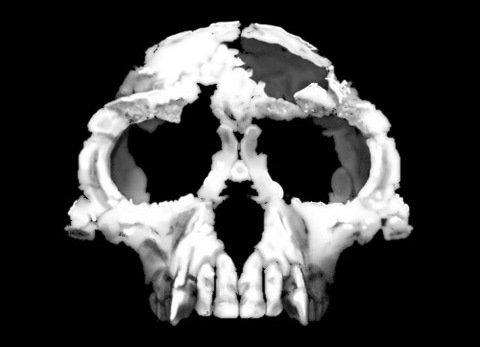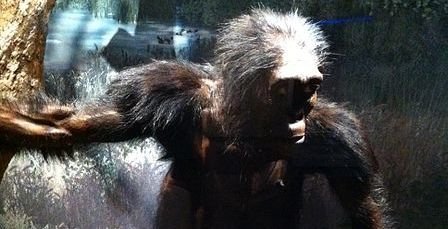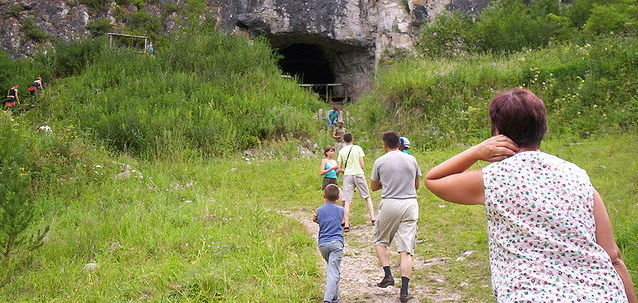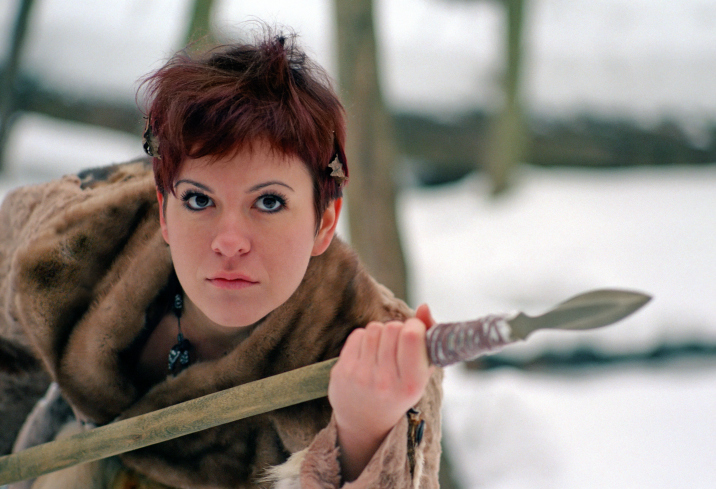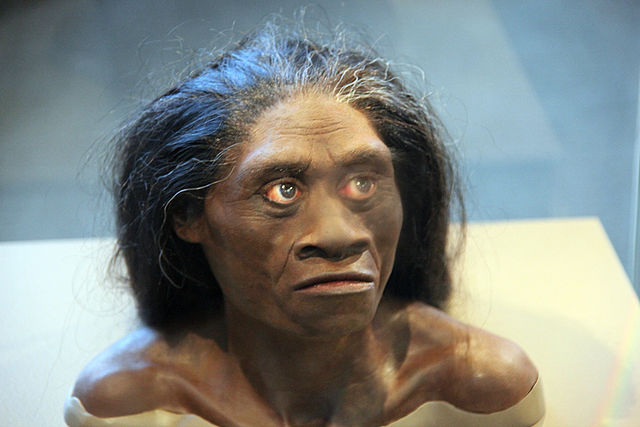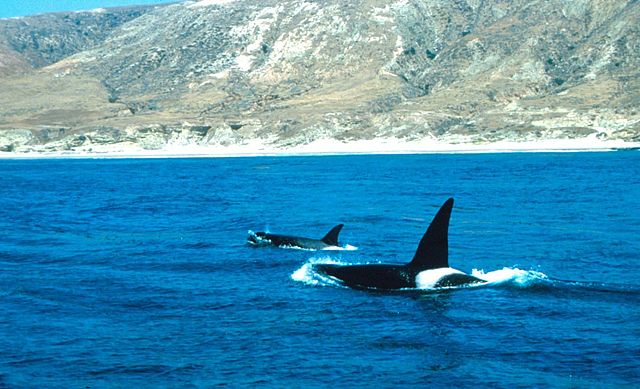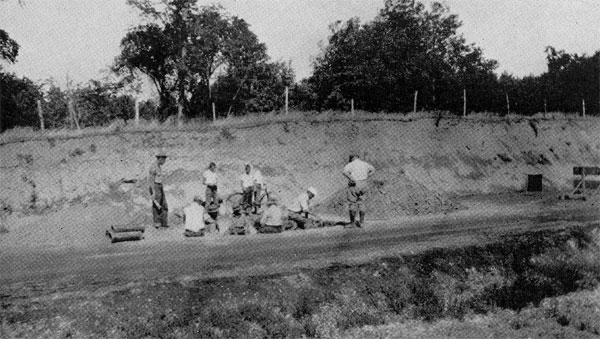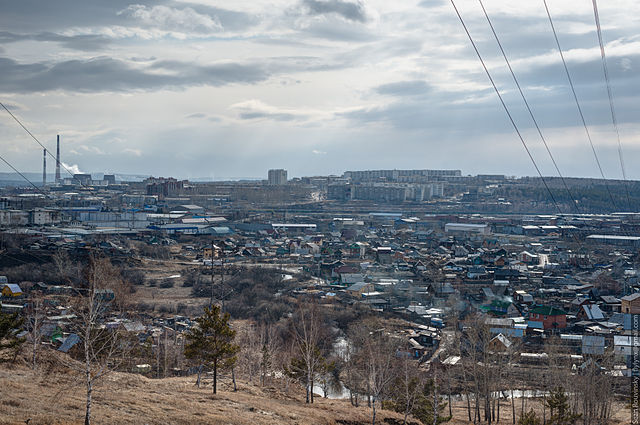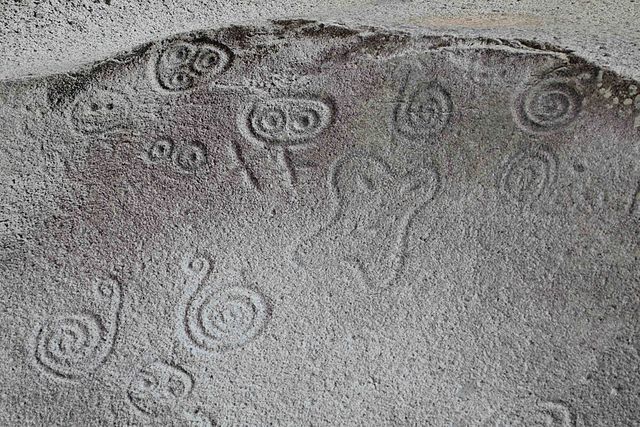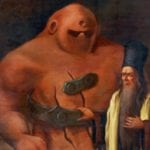10Ardi
Living in Ethiopia some 4.4 million years ago, the Ardipithecus ramidus fossil known as Ardi is the oldest known hominid skeleton. Her partial remains consist of around 125 separate pieces, including her skull and teeth. She was 1.2 meters (4 ft) tall, weighed about 50 kilograms (110 lb), and walked upright. She had a small brain, her arms and fingers were very long, and her opposable big toe helped her hold onto branches as she moved through the trees. Her intact teeth reveal that she subsisted on a diet of plants, fruits, and small mammals. Ardi wasn’t a human and she wasn’t a chimpanzee, but she had characteristics of both. Since Ardi’s skeleton suggests that humans and chimps evolved separately from a common ancestor, she effectively disproved the theory that humans might have evolved from early chimps. Instead, we now know that humans have been evolving separately from apes for at least six million years. Scientists are still trying to figure out when humans and chimps split from their common ancestor. Although there are some older partial remains, including a six million-year-old skull from Chad, Ardi is a much more complete and significant find. Her skeleton is kept in the National Museum of Ethiopia.
9Lucy
Discovered in Ethiopia in 1974, Lucy is perhaps the most famous fossil of all time. And deservingly so, given that she revolutionized how we think about human evolution. Before 1974, anthropologists believed that human intelligence predated our ability to walk on two legs, but Lucy proved that the opposite was true. At 3.2 million years young, Lucy was the oldest known human skeleton until Ardi was revealed in 2009. Her name was actually something of a coincidence: The Beatles song “Lucy in the Sky with Diamonds” was playing on the radio when the first of her 47 bones was discovered. Lucy had a small brain, long arms, short legs, and a large belly. She stood just 1 meter (3.5 ft) tall and weighed only about 27 kilograms (60 lb). But the structure of Lucy’s pelvis and knee showed that she walked upright on two legs, placing her within the human family. She ate fruits, nuts, and seeds, and possibly termites and bird eggs. Researchers know for sure that Lucy was a female because other discoveries show that males of her species were much larger. It is also known that Lucy was a fully grown adult, probably about 21 years old, since her human-like wisdom teeth were exposed and had been used prior to her death. Lucy’s remains are kept in a special vault at the National Museum of Ethiopia.
8X-Woman
Despite sounding like something out of Marvel comics, X-Woman lived in Siberia around 40,000 years ago. Although “woman” might be something of a misnomer, since the only part of the skeleton discovered was a pinky finger, which is now believed to belong to a child. Still, X-Woman marks the first time a new type of human has been discovered through DNA testing only. Previously, science had no idea about this prehistoric human or the wave of migration out of Africa she implies. Scientists did know that Homo erectus left Africa around two million years ago but had no evidence about what happened for the next 1.5 million years after that. Since X-Woman’s ancestors probably left Africa around a million years ago, she confirms that migration continued during that time. DNA extracted from X-Woman’s bone is distinct from DNA taken from Neanderthals or from modern humans, indicating the existence of a third species, named H. denisovans after the cave X-Woman was found in (pictured above). It’s unclear exactly how much contact the three species had with each other, but we do know that humans interbred with the Denisovans at some point, since Australian Aborigines and the Melanesians of New Guinea share around 5 percent of their DNA with X-Woman.
7The Red Lady
The Red Lady was found in the El Miron Cave of northern Spain. She lived around 18,700 years ago, toward the end of the last ice age. She was dubbed “the Red Lady” because her bones were covered in a reddish pigment called ochre. A chemical analysis of the pigment revealed that it could not have come from a local source, implying the existence of at least some form of long-distance trade. The pigment may have been part of a ritual, or it might just have been used as a preservative. The Red Lady died between 35–40, but researchers aren’t sure exactly why. She seemed to be in good health and had a good diet of ibex, red deer, fish, mushrooms, fungi, and seeds. Her body was buried in a small space at the back of the cave—but only after it had decomposed. Researchers know this because the bones are covered in black manganese oxide, which forms as bodies decay aboveground. The Red Lady’s elaborate burial, including etchings found near the grave, suggest that she may have been special in some way, but we can’t be certain exactly how.
6The Hobbit
In 2003, archaeologists found a tiny new human species on the remote Indonesian island of Flores. The female “hobbit” is 18,000 years old and appears to have lived at a time when modern man was colonizing the rest of the world. Standing just 1 meter (3 ft) tall, Homo floresiensis may biologically be closely related to modern humans. The discovery astonished scientists, who had previously believed that Homo sapiens crowded out all other humans tens of thousands of years ago. Now, it seems that belief is false and recent evolution is more complex than previously thought. The female hobbit’s skeleton is mostly intact, and bones from several other individuals in the species have also been found. From these remains we know that Homo floresiensis had grapefruit-sized brains, closer to today’s chimpanzees than us. Yet Homo floresiensis lit fires, made stone tools, and hunted for meat in groups. Some scientists have even suggested that the hobbit is not an unknown species, but instead is actually a normal human with Down’s Syndrome, a suggestion that sparked a massive international slanging match between rival researchers. However, with bones from numerous individuals who had the same characteristics, it seems likely that Homo floresiensis is here to stay.
5The Arlington Springs . . . Woman?
In 1959, Arlington Springs Man was discovered on California’s Santa Rosa Island and dated to around 10,000 years ago. A few years later, Arlington Springs Man became Arlington Springs Woman, as the bones were determined to be female. Modern dating techniques also pushed back the fossil’s origins to around 13,000 years ago, making them the oldest human remains found in the Americas up to that point. Then, in 2006, Arlington Springs Woman arguably became Arlington Springs Man again, as the very same scientists who had determined it was a woman 40 years earlier announced they had probably gotten it wrong, estimating a 70 percent chance that the fossil was male after all. Hopefully, future research methods will give a conclusive answer. Either way, the Arlington Springs Person is a huge find, proving that prehistoric man was using boats and supporting the theory that the early Americans moved down the coast by sea rather than over land. Instead of a roaming community of big game hunters, like the famous Clovis People, the Arlington Springs Individual probably lived with a group of coastal fishermen and scavengers, challenging our image of the first Americans.
4Minnesota Woman
Minnesota Woman’s 8,000-year-old remains were discovered near Pelican Rapids, Minnesota, during road construction in 1931. Some members of the road crew wanted to discard the bones and keep on working, but crew member Carl Steffen insisted they “make a man out of it.” Instead, they made Minnesota Woman, who was probably about 16 years old when she died. She was not a mother and carried a dagger made from an elk’s horn, probably as a hunting tool. She also had a shell pendant, possibly a talisman, made from a snail later identified as only living in Florida. Minnesota Woman was not buried by her family or tribe. Broken clam or mussel shells covered her body and the new highway cut across an extinct glacial lake, making it likely that she drowned. Her body was preserved under a layer of sediment at the bottom of the lake. The skeleton was mostly intact, and her ivory-colored bones showed every slight impression of blood vessel and brain matter. Minnesota Woman was reburied in South Dakota by the Sioux in 1999.
3Mother
Mother’s 7,700-year-old skeleton was discovered in Siberia in 1997. The skeleton was complete down to the little bones in her hands. But Mother is probably best known as the earliest example of death during childbirth. And she may also be responsible for the oldest confirmed evidence of twins in history. You see, it’s very rare to find a baby still inside its mother. But in the extraordinary Siberian skeleton, the tiny bones of two babies were found inside their mother’s womb. One baby, partially delivered feet-first, apparently became stuck, causing the death of all three. The young mother, who was in her early twenties, was buried lying on her back with several marmot teeth next to her. She seems to have been a member of a transient hunter-gatherer community, who rarely had formal cemeteries. Yet more than 100 graves have already been discovered around the Siberian city of Irkutsk, hinting at a more advanced culture than previously thought. Sadly, many of the graves are covered by city development, making excavation difficult.
2Taoua
Taoua, an indigenous Caribbean woman, died roughly 1,000 years ago on the West Indian island of Nevis. Her mostly intact skeleton was found in 2011, buried on a beach near White Bay. Data from this period of Caribbean history is rare, conflicting, and varied, making the discovery an exciting one for historians of the region. No other skeleton as complete as Taoua, the Carib word for “white stone,” has ever been found in the Caribbean. Taoua had a number of cavities and had lost some of her teeth, presumably to similar decay. This indicates that she had sugar in her diet, possibly from corn. (Sugar cane is an Old World crop brought to the West Indies by the Spanish.) The exposure of her dental root could have led to blood poisoning, resulting in her death. She also had several broken ribs, although all were long healed. Her joints showed signs of constant use and her spine was deformed, indicating osteoarthritis. In general, Taoua’s skeleton indicates a very rough life, but she was otherwise healthy.
1Penon Woman
Penon Woman died around 13,000 years ago, during the last ice age, at the age of 26. Her skeleton was found on the edge of a giant prehistoric lake, now part of the suburbs of Mexico City, and she was named after the “little heel” of land that would have jutted into the ancient lake. The almost complete skeleton was discovered in 1959, when it was thought to be no older than 5,000 years. Her true age was only discovered in 2002, when archaeologist Silvia Gonzalez deployed more recent dating techniques. No one knows why the young woman died. Her bones are well-developed and healthy, showing no signs of malnutrition. Interestingly, Penon Woman’s long and narrow skull doesn’t much resemble modern Native American skulls. Neither do a number of other very early American fossil remains, including the famous Kennewick Man. At the time, Silvia Gonzalez suggested that Penon Woman and Kennewick Man were probably members of a group that arrived in the Americas by boat from the Pacific, throwing doubt on the traditional belief that people first arrived in the Americas via the Bering Strait land bridge. Another theory claims that Penon Woman and Kennewick Man might represent a group of early Europeans who somehow crossed the Atlantic. But these theories were thrown into doubt in 2014, when archaeologists discovered another 13,000-year-old female fossil, known as Naia, in a Mexican cave. Naia had the same unusual facial structure as Kennewick Man and Penon Woman, but her DNA conclusively linked her to Native Americans, suggesting that the unusual skulls probably don’t represent a distinct ethnic group after all. Shelley Kuziak is a freelance writer and researcher.
